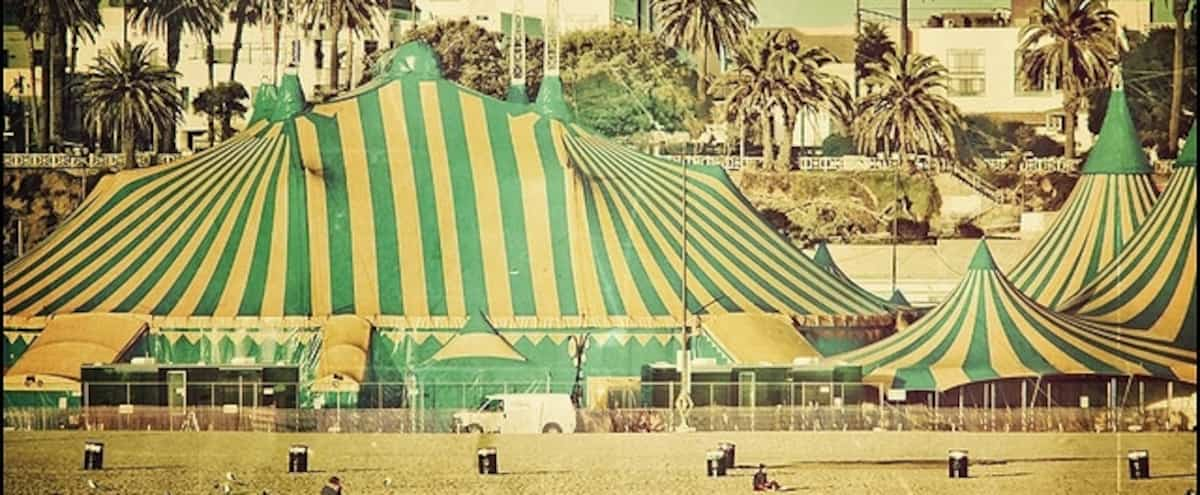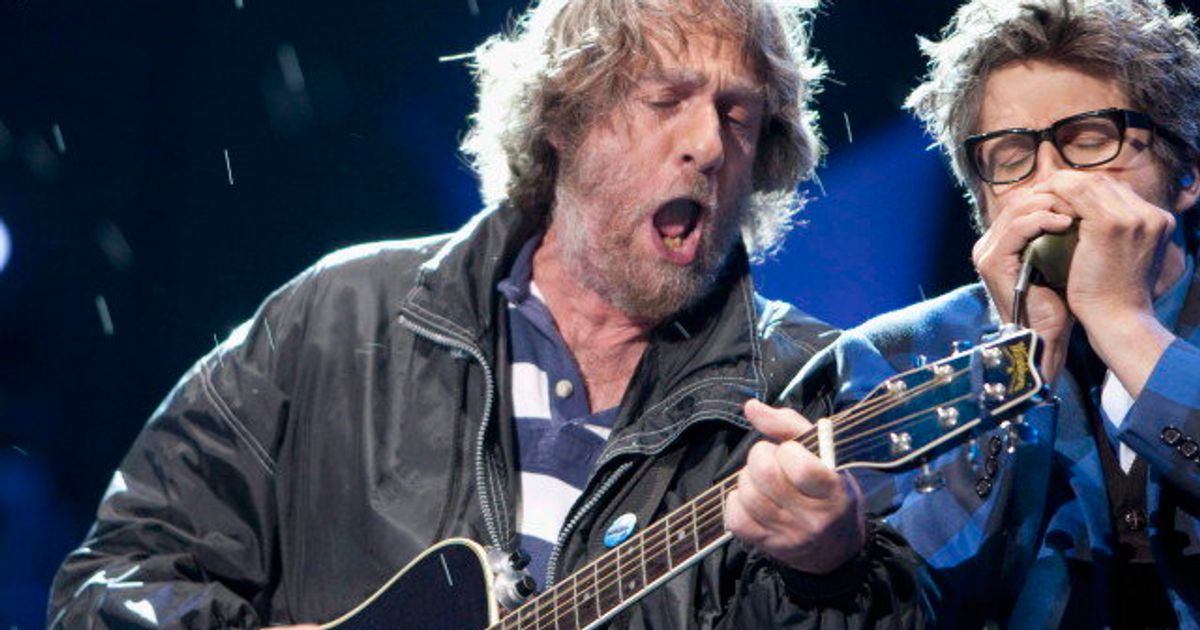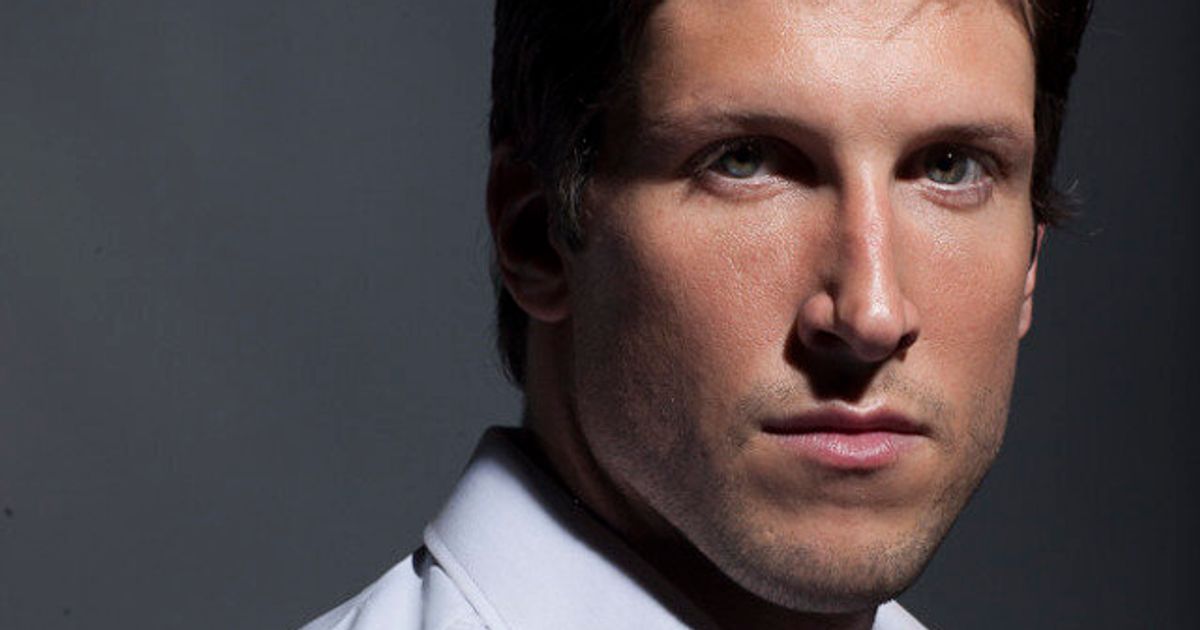Something worked or it broke. Yes, on September 3, 1987, Cirque du Soleil took the greatest risk of its young existence by putting its meager funds on a show to the performing elite of the West Coast of the United States.
Before we get to that pivotal summer, let’s go back in time a little to learn more about the origins of Cirque du Soleil.
BAIE SAINT PAUL
In the late 1970s, Baie-Saint-Paul attracted a community of young nomads. The location of the Auberge Le Balcon Vert became the meeting point of this beautiful youth in search of freedom.
In the spring of 1979, Gilles Ste-Croix was hired to run the inn. Among other things, he is asked to plan activities for the summer season. To assist him in his mission, he hired an animator, a young fire-eater, Guy Laliberté, who had just returned from Baie-James.
Before arriving at Balcon vert in Baie-Saint-Paul, Guy Laliberté worked in Baie-James. He moved north to earn as much money as possible to study nuclear engineering. His plans change when the strike paralyzes work on his construction site. Laliberté then goes to Baie-Saint-Paul and becomes an unpaid entertainer in exchange for the free accommodation.
charlevoix@photopierrerochette.com
Guy Laliberté shines in the midst of these young people. He is a real mountaineer: he knows how to spit fire, sing, dance and play the harmonica and even the accordion. That’s quite a lot! During the 1980 general election, he drew media attention and made his hostel partners laugh when he ran for the sarcastic Rhinoceros Party under the name Guy Pantoufle Laliberté. The creative candidate proposes, among other things, to build a macramé bridge between the Île aux Coudres and Saint-Joseph-de-la-Rive if elected.
The Ste-Croix/Laliberté duo and their companions first founded the traveling show troupe Échassiers de Baie-Saint-Paul and then the Club des talons haut. During the summer months they are exhibited in public places. Then they present impressive theatrical performances, where you can be carried away by roller-skate dancers, stilt walkers, funny jugglers and striking fire-eaters.
In 1982, the High Heels Club officially received its first real contract when the municipality of Baie-Saint-Paul commissioned it to organize its carnival. The duo join forces with Daniel Gauthier to ensure the troupe’s financial management. He will complete this winning trio that will soon give birth to the reinvented circus.
ON THE WAY TO QUEBEC CITY 84
Funding culture has always been an important issue in Quebec. The difficult financial path of this young group is obviously no exception. Imagine Gilles Ste-Croix, who in 1980 set out to walk almost 90 km on stilts from Baie-Saint-Paul to Quebec to attract media attention and raise money. To raise as much money as possible, Ste-Croix sells hiking miles for 25 cents to 1 dollar. The exploit, which lasted 22 hours, allowed him to collect $60,000.
However, the most lucrative approach to funding the creation of the circus is undoubtedly that of Guy Laliberté. The fire eater comes up with the idea of taking advantage of the organization of the parties around the 450e Commemorates Jacques Cartier’s arrival in Canada to persuade the Quebec government to hire his troupe of public entertainers. Determined like no other, Laliberté traveled to Quebec, met then-Prime Minister René Lévesque and asked him for a bursary to liven up the 450th anniversary celebrationse. Guy promises the Prime Minister a show no one has seen before, a circus show without animals.
He’s received a $1.6 million grant to put on a series of shows to keep Quebecers entertained throughout the summer. We can say that this moment confirms the birth of Cirque du Soleil.
THE BIG TOUR
Inspired by their staging at the Baie-Saint-Paul exhibition center, the troupe created “Le Grand Tour du Cirque du Soleil”. In the summer of 1984, around forty artists in eleven cities in the province of La Belle took part in the exhibition. The first banner in the name of CIRQUE DU SOLEIL was hung for the first time in Gaspé in June.
The Grand Tour experiences magical moments, but also small grievances associated with the Tour. The humble circus’ performers and technicians must juggle a storm-damaged circus tent, troupe exhaustion from the miles accumulated on long truck trips, and the inconvenience of accommodation. And be it said, when these celebrations around the 450the nearly became a fiasco in 1984, yet provided the troupe with visibility and credibility, allowing the fledgling Cirque du Soleil to secure loans and additional financial support from the government to continue its formation.
FROM BAIE SAINT PAUL TO LOS ANGELES
On their return to Charlevoix, the Ste-Croix/Laliberté/Gauthier trio and their supporters encountered Baie-Saint-Paul’s refusal to hold La Fête foraine in 1986. Apparently, as with many artistic creations, the business model is precarious. The troupe needs subsidies because Quebec’s climate doesn’t allow for outdoor performances for more than four to five months a year. That’s when Guy came up with the idea of exporting Cirque du Soleil to the United States.
Multiplying the steps, he heads to the West Coast and convinces the organizers of the Los Angeles Festival to see the creations of the artists of his newly invented circus company. The show looks good. We then managed to get a seat to perform at the prestigious Los Angeles Festival in 1987. But there’s a catch! The festival has no money to pay them. It has to be said that it costs a fortune to transport a circus troupe and their equipment more than 5000 km. Regardless, Laliberté convinces his accomplices that this flagship event is their only chance of survival and that Cirque du Soleil is doomed to die slowly if it stays in Quebec. In exchange for a central spot at the Los Angeles event, the circus will cover all financial costs and agree to present its show free of charge. The acrobats from Baie-Saint-Paul make their way to California on trailers, probably not enough money to finance the trip back to the country after the performance.
In Los Angeles, Cirque du Soleil presents its brand new show, Le Cirque réinventé. The troupe knows that it excels for its scenography, for its 360-degree stage that allows the audience to be seated all around, as well as for the numerous physical interactions between artists and audience.
The whole American art fanatic gathers in the hall to witness the performance of these Quebec acrobats. Feverish and stressed, Guy Laliberté knows he’s taking a lot of risks. The survival of Cirque du Soleil depends on this September 3, 1987 performance. Whether it works or fails!
Sigh of relief and cheers
Success in Los Angeles comes immediately. Both the media and audience are stunned by Cirque du Soleil’s innovative performances. The success of the September 3 performance allowed him to sign a deal for a major tour of America, performing to sold-out crowds in San Diego and Santa Monica. This success continued unabated for the next four years. Cirque du Soleil is fast becoming a profitable cultural venture, with 97% of its funding coming from government support and now only 4%. And that will only be the beginning of the adventure!

Thinker. Professional social media fanatic. Introvert. Web evangelist. Total pop culture fan.


![The Montreal Gazette wrote in late 1986: “The Los Angeles Festival will present three weeks of international theatre, dance and music next September.[...]The crème de la crème of the Hollywood showbiz community is expected to be in attendance on opening night of the festival... And guess who will be the opening night headliner. None other than the beloved Cirque du Soleil.” [traduction libre]](https://m1.quebecormedia.com/emp/emp/Photo_38c013aac-08c5-48fb-9919-bc51c494fbbc_ORIGINAL.jpg?impolicy=crop-resize&x=0&y=0&w=1759&h=1177&width=400)
![The Montreal Gazette wrote in late 1986: “The Los Angeles Festival will present three weeks of international theatre, dance and music next September.[...]The crème de la crème of the Hollywood showbiz community is expected to be in attendance on opening night of the festival... And guess who will be the opening night headliner. None other than the beloved Cirque du Soleil.” [traduction libre]](https://m1.quebecormedia.com/emp/emp/Photo_4A1ef65716-3fdf-4eea-b8da-b7c8f62ab90a_ORIGINAL.jpg?impolicy=crop-resize&x=0&y=0&w=557&h=800&width=400)
![The Montreal Gazette wrote in late 1986: “The Los Angeles Festival will present three weeks of international theatre, dance and music next September.[...]The crème de la crème of the Hollywood showbiz community is expected to be in attendance on opening night of the festival... And guess who will be the opening night headliner. None other than the beloved Cirque du Soleil.” [traduction libre]](https://m1.quebecormedia.com/emp/emp/Photo_4B63de4898-c49b-4f9d-a763-33507f7520cd_ORIGINAL.jpg?impolicy=crop-resize&x=0&y=0&w=495&h=340&width=400)
![The Montreal Gazette wrote in late 1986: “The Los Angeles Festival will present three weeks of international theatre, dance and music next September.[...]The crème de la crème of the Hollywood showbiz community is expected to be in attendance on opening night of the festival... And guess who will be the opening night headliner. None other than the beloved Cirque du Soleil.” [traduction libre]](https://m1.quebecormedia.com/emp/emp/Photo_3B562506c8-6afb-42ce-a0eb-706dabba9580_ORIGINAL.jpg?impolicy=crop-resize&x=0&y=0&w=1100&h=735&width=400)





